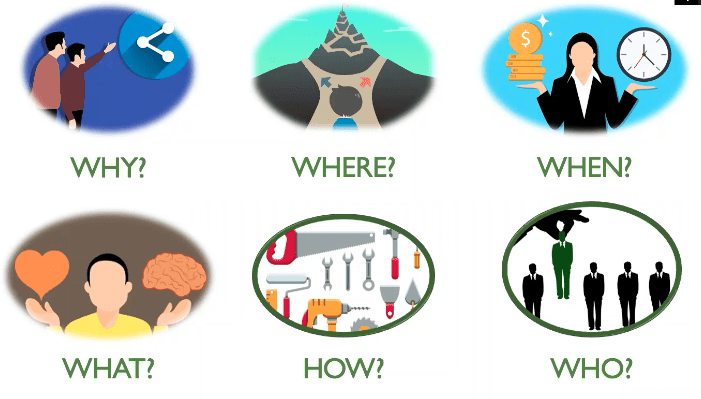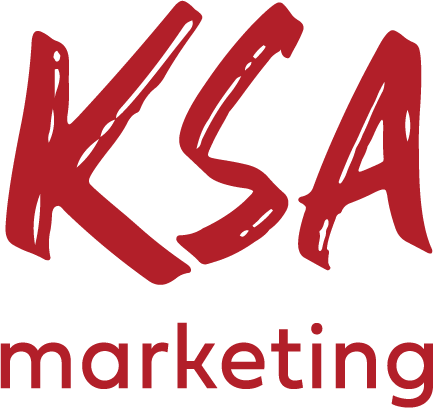In the last segment of their four-part series, Taylor and David tackle social media marketing in their webinar “Social Media Marketing in the Time of COVID-19.” This webinar breaks down each of the 6 Ws (see below) of Social Media Marketing and also works to teach the audience more about the various tools social media marketers use for successful strategy execution.

Overview of the 6 Ws
- Why: Why should you use social media marketing?
- Where: Where should you focus your social media strategy?
- When: When should you post to optimize your reach and visibility?
- What: What kind of content should you post to engage your target audience?
- How: How can you better manage your social media strategy?
- Who: Who should be doing this crucial work?
We are all familiar with the 6 Ws, but in social media marketing we use them in a slightly different order and way than we learned in elementary school.
Why?
The “why” describes what the benefits are of using social media and explains why a company would want to leverage social media in the first place. Taylor points out the following benefits:
- Customer service: It’s a place for fans to get in contact with your brand and ask questions about product or services
- Sales support: You can educate your target audience about products and services so they will be further down the marketing funnel when they make contact with your sales staff
- Business development: It could be the perfect opportunity to team up with another brand that is targeting the same audience
- Lead nurturing: Social media is a great way to show just how many people are using and enjoying your product
- Brand awareness and affinity: This is the best place for people to discover your brand and for your customers to congregate to talk about your brand
Where?
The “where” is which social media platforms you should be using, which can be tricky to navigate as there are many platforms all used in different ways. To find the best platform for your business, you must think about which platforms your audience is on based on their demographics, psychographics, and their behaviors, as well as which platforms are best suited for your product. For example, if your product is food, typically it makes more sense to leverage Instagram because it is more visual. Taylor explains it’s not as simple as going on whichever platform has the most users, you need to specifically define your target audience so you know where you can reach them.
When?
“When” you post is different from company to company because of the platform you choose to use and the type of content you are posting. Taylor shows viewers how you can use a Density Map, also referred to as a heat map, which breaks down what is the best time to post on each platform based on content type. In the COVID-19 era, the optimal times to post have changed because user habits have changed to adapt to the new lifestyles.
Taylor points out you cannot always be ready to post at the optimal times due to conflicts such as meetings. To solve this issue, he recommends building a content calendar to organize your posts. This calendar outlines what kinds of content you are posting and when. It should account for at least 85% of your social content and leave the remaining 15% for organic content. Although building a content calendar is time-consuming, it forces you to create valuable content that will contribute to the execution of your marketing strategy and will also make it easier to post regularly which will help with follower retention.
What?
A lot of thought needs to go into exactly what you are going to post. “Content is king” is a phrase you will hear a lot in social media marketing. It’s hard to create your own organic content all the time, but your followers want to engage with your brand on social media and not just see you promoting your product or services. Taylor suggests aiming for 80% of your content to be engaging entertainment and have the other 20% be promotional. He points out that as a lot of business is moving online due to COVID-19, it is ok if the promotional content is closer to 30%, and for local businesses a 60/40 split is more accurate.
Some types of engaging content:
- User generated content
- Staff shout outs
- Brand values
- Industry news
- Tips and tricks
- A look inside your product
- Polls and surveys
- Company news
- Market data
- Customer reviews
Your content can be text based, video, or audio. Text involves product descriptions, the about page, and obviously blogs which can arguably be the easiest content to produce. There are much lower expectations for video production quality now, and it is the most engaging with many platforms now supporting it such as Instagram, Facebook, or TikTok. The demand for audio content is growing as podcasts and audiobooks are becoming more popular. If you don’t have the capacity to create your own content, you could reach out to an established podcast and see if they would feature your podcast.
Users should avoid using too many stock photos and reposting other content because people will unfollow you. Many of us have cameras on our phones so it is easy to take pictures specific to your brand or company to replace stock photos. In the case of reposting, your viewers will unfollow you and follow the organization that produces the content. Both of these aspects contribute to the importance of creating original content.
How?
There are many tools you can use to successfully manage your campaign or strategy.
- BuzzSumo tells you what content and influencers are trending at the moment, but you only get about 5 searches a month with the free version.
- Hootsuite, Sprout Social, and Buffer are social media managing platforms where you can make a calendar to schedule posts and then look at responses you get from your followers. These tools are a good resource for the latest in social media marketing because they publish articles based on the data they get from their users.
- Canva is a tool for editing pictures anyone can use regardless of your background in graphic design.
You can try free versions or read reviews on each of these platforms to decide which one you like best. The one you decide to use really comes down to your own preferences.
Who?
Your social media strategy can be managed by:
- You and your staff
- A social media coordinator
- A marketing agency
It is important to remember social media is a tool that should support your overall digital marketing strategy. You need to think about how you can fit social media into your digital marketing strategy to best support conversion.
To review, by putting energy into social media marketing and using platforms that make the most sense for your brand and your target audience you can make your life easier, and your strategy more effective, by creating a content calendar ahead of time. It is important to ensure your content is engaging and diverse, as well as tailored to your target audience. To learn more about how specifically to use the tools and see more examples, please watch the whole webinar here.

